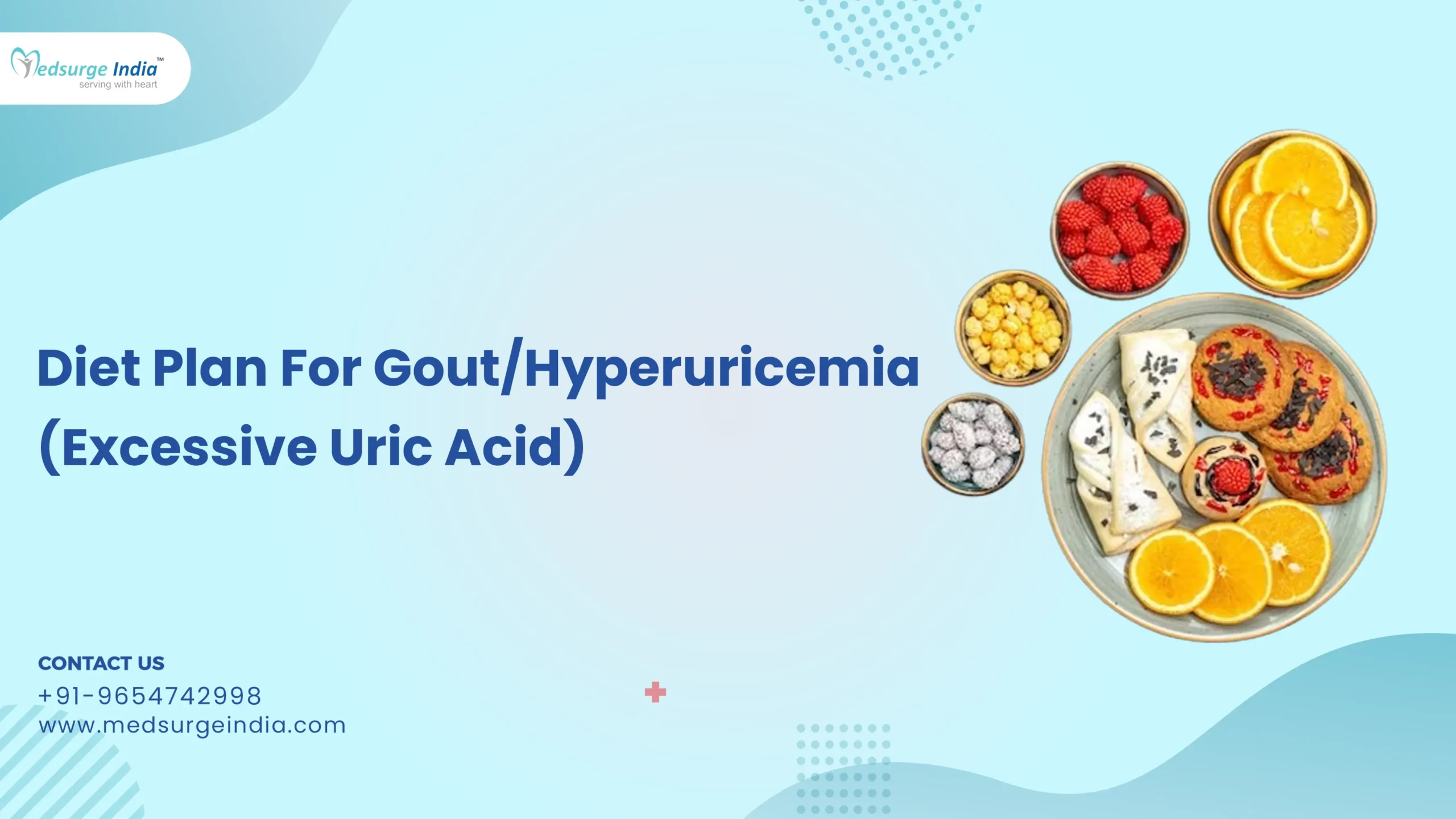
Diet Plan For Gout/Hyperuricemia (Excessive Uric Acid)
Uric acid is a byproduct of the natural breakdown of cells in the body and the consumption of certain foods. The majority of uric acid is eliminated through the kidneys and excreted in urine, while a small amount is expelled through stool. However, if there is an excessive production of uric acid or if the kidneys are unable to effectively remove it from the bloodstream, the level of uric acid in the blood will rise.
Elevated levels of uric acid in the blood can lead to the formation of solid crystals in the joints, resulting in a painful condition known as gout. If left untreated, these uric acid crystals can accumulate in the joints and surrounding tissues, forming hard deposits called tophi. Additionally, high levels of uric acid can contribute to the development of kidney stones or even kidney failure. To manage this condition, it is important to adhere to a diet that helps regulate uric acid levels.
What Is Gout?
Gout is a prevalent and intricate type of arthritis that has the potential to impact individuals from all walks of life. It is distinguished by abrupt and intense episodes of pain, inflammation, redness, and sensitivity in one or multiple joints, typically occurring in the large toe.
Gout occurs when there is an accumulation of urate crystals within the joint, resulting in inflammation and excruciating pain during a gout attack. Urate crystals tend to develop when the levels of uric acid in your bloodstream are elevated. Uric acid is produced by your body as it breaks down purines, which are naturally present substances in your body.
Diet Plan For Gout
Below is a dietary regimen designed specifically for individuals afflicted with gout.
- Breakfast- Multigrain roti, whole-grain bread sandwiches, and unsweetened cereal with a cup of low fat milk or skim.
- Mid meal- Fruits such as strawberry, pineapple, muskmelon, and or pomegranate along with a cup of coffee or skim milk.
- Lunch- Brown rice, roti and dal along with sabzi OR roasted chicken with whole grain roll and mustard, mixed green salad, vegetables and low-fat curd or raita.
- Evening- A cup of sprouts or fresh cherries, nuts and seeds such as almonds, pumpkin, walnut, chia and pumpkin seeds.
- Dinner- Roti, bhindi or tori curry and cucumber salad OR roasted salmon. Steamed or roasted green beans, and whole grain pasta with olive oil. Also include low fat yogurt.
- Post-dinner- A caffeine-free drink, like chamomile herbal tea or any others.
Food Items To Minimize
Certain foods can increase the level of uric acid. You might want to avoid them. These include:
- Red meat such as beef and pork, as they contain high amounts of uric acid.
- Organ meat- They also deliver high amounts of uric acids. Examples are kidney and liver.
- Beer and alcohol- They have the ability to significantly increase the production of uric acid levels in the body. They also make it more challenging for the body to eliminate excess uric acid.
- Seafood such as anchovies, tuna and shellfish- They should be avoided during gout flare-ups as they are significant contributors of uric acid in diet.
- Sugary foods and drinks- These beverages provide high fructose corn syrup, which promotes the generation of uric acid.
- Protein rich vegetarian sources- Soya, paneer, and dals, which are rich in protein, can also contribute to the elevation of blood uric acid levels.
- Certain vegetables such as cauliflower. It is abundant in uric acid and it also contains essential nutrients that aid in diminishing insulin resistance.
Highlights of Do’s And Don’ts
Here is a highlight of a few points that tells you what to do and not do to help you maintain the level of uric acid in your body.
Do’s – To manage the uric acid level in your body, you may
- Increase your vegetable intake.
- Consume an ample amount of water.
- Engage in moderate exercise for a duration of 30 minutes to one hour daily, such as brisk walking, participating in team sports, cycling, or swimming.
Don’ts – To manage the level of uric acid, you may also follow this
- Do not depend on carbonated beverages, sugary cereals, biscuits and pastries, fried dough and baked goods, potato chips, and sweets to sustain you throughout the day.
- Do not consume food hastily. Take the time to sit down and thoroughly chew each mouthful.
- Do not snack between meals. Instead ensure you have regular meals.
- Avoid consuming red meat, organ meats, and seafood.
- Limit your fruit intake to no more than two or three servings per day.
- Steer clear of alcoholic beverages and other fizzy drinks.
Easily Consumable Food Items
Certain food items that are readily available and can help you in maintaining your uric acid level are:
- Cereals like wheat, whole grains, and bajra.
- Pulses such as red gram, green gram, and black gram.
- Vegetables including all types of gourd, ladies fingers and green leafy vegetables.
- Fruits such as citrus fruits, bananas, berries, pineapple and papaya.
Helpful: Top 10 Food Items a Diabetic Patient Must Add in the Diet
Conclusion
If you encounter abrupt and severe pain in a joint, it is advisable to contact your physician. Neglecting to address gout can result in the escalation of pain and damage to the joint. It is crucial to seek immediate medical attention if you develop a fever and notice that a joint is both inflamed and hot, as this may indicate an infection.












